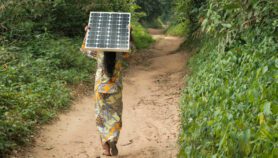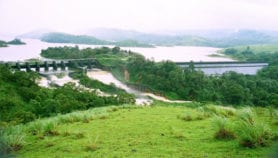By: Smriti Mallapaty
Send to a friend
The details you provide on this page will not be used to send unsolicited email, and will not be sold to a 3rd party. See privacy policy.
[KATHMANDU] Nepal is looking at waste-to-energy (WtE) technologies to address its huge energy deficit and also manage growing urban and industrial waste.
Half of Nepal’s households are off the national grid while supply shortfalls and interrupted power cause industries losses worth 60 billion Nepali rupees (US$ 700 million) annually.
Last month (26 April), the ‘Waste-to-Energy Bazaar 2013’ initiative launched by the government’s Alternative Energy Promotion Centre (AEPC) and the World Bank awarded three proposals for biologically or thermally converting biomass into gas that can fuel generators.
Biomass sources identified by the proposals include human faeces, cattle manure, chicken litter, agricultural waste and organic municipal solid waste (MSW).
AEPC assistant director Samir Thapa explained that the initiative adds an urban dimension to the earlier focus on rural renewable energy projects that have resulted in over 250,000 small biogas plants coming up across rural Nepal.
SPEED READ
- Biogas from waste can help Nepal meet its serious energy deficit
- Municipal solid waste is being seen as a major source of biogas
- New energy policy supports waste-to-energy projects
"This is not just exciting; it is the way to go in a country without fossil fuels," Anil Chitrakar, social entrepreneur and co-founder of the Himalayan Climate Initiative, told SciDev.Net.
One project estimated a generation potential of five megawatts of electricity from the 300 tonnes of MSW produced every day in Kathmandu alone. Almost 1,630 tonnes of MSW are generated across Nepal daily.
The first prize went to a proposal to generate 1.25 megawatt-hours of electricity and 1,000 tonnes of fertiliser from waste produced by 200,000 birds in three poultry farms, using technology proven in Bangladesh.
"We are trying to bring in new technologies from neighbouring countries that will be suited to our localised context," added Thapa, who hopes to have projects running within three years.
India already has an installed WtE capacity of 211 megawatts from 22 projects, earning carbon credits through the Clean Development Mechanism (CDM) under the Kyoto Protocol. China has 100 CDM projects.
One challenge in Nepal will be to sensitise bankers — who are used to financing motorcycles, cars or houses — on the financial viability of WtE projects, said Chitrakar.
"The policy landscape also needs to be developed since regulations that currently govern waste and energy are separate," said Thapa.
The AEPC is now trying to incorporate WtE plans into a draft renewable energy policy and a renewable energy subsidy policy that were endorsed in March to support institutional and community biogas systems.













